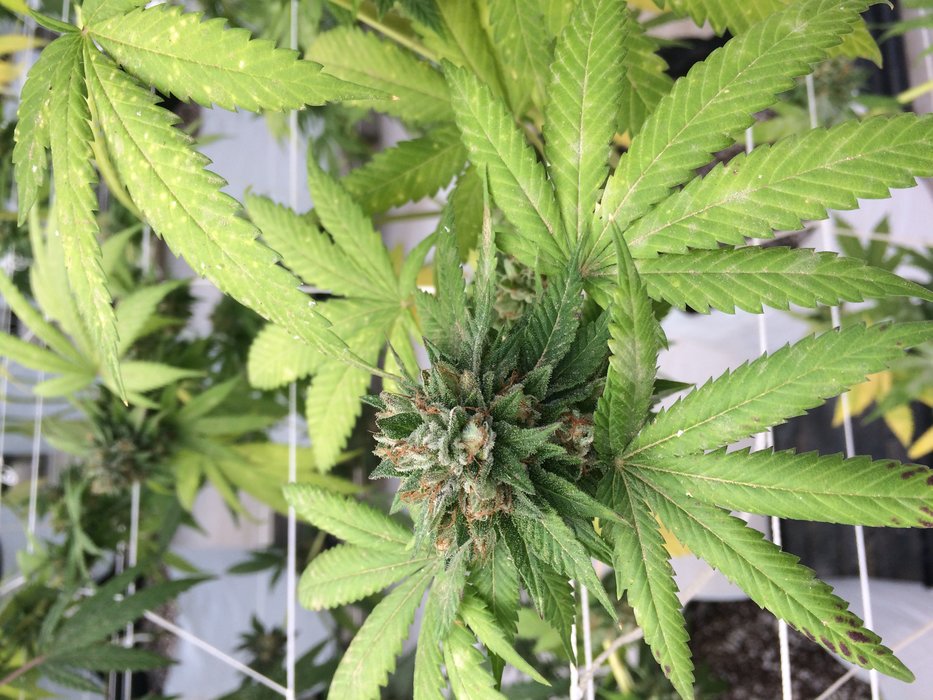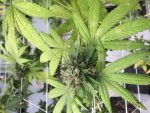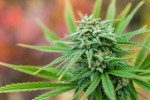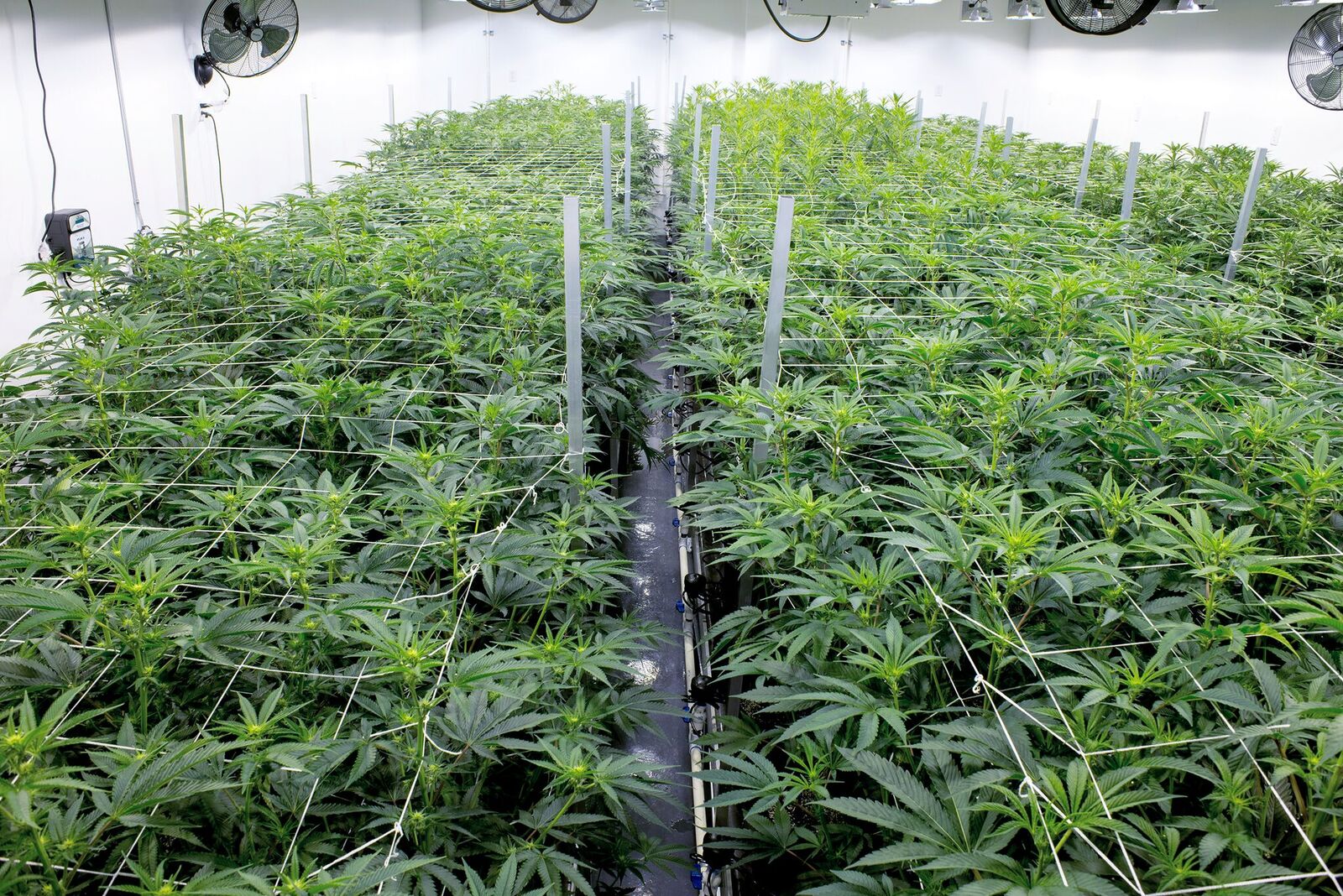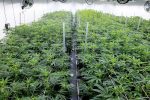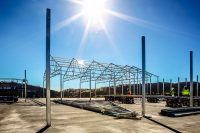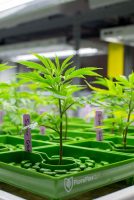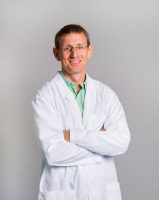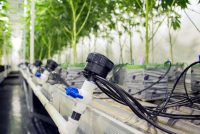In the first part of this series, we introduced Dr. Hope Jones, who took her experience in tissue culture from NASA and brought it to the cannabis industry and C4 Laboratories. We discussed some of the essential concepts behind tissue culture and defined a few basic terms like micropropagation, totipotency, explants and cloning. Now let’s get into some of the issues with cloning from mother plants and the advantages that come with using tissue culture for propagating and cultivating cannabis.
Time & Resources

Taking cuttings from mother plants is arguably the most popular method of propagating cannabis plants. It is a process that requires significant real estate, resources and labor. “Moms can take up a great deal of space that is not contributing directly to production,” says Dr. Jones. “I know from experience that scaling up production and/or adding new strains to the production line requires significant time and resources to raise and maintain new healthy and productive mother plants.” Each mother plant produces a limited number of clones per harvest period and over the course of her life cycle.
By using tissue culture, a cultivator can generate an almost infinite number of clones from one plant cutting. With so many growers calculating their costs-per-square-foot, micropropagation is an effective tool to save space, labor and time, thus increasing profit margins. “Just to put it in perspective: Holly Scoggins’ book Plants From Test Tubes, cites a Day Lily cultivator who uses micropropagation to produce 1,000 plants in 30 square feet of shelf space each week,” says Dr. Jones. “Using conventional methods, one would need a half-acre to produce the same amount of plants.” Cultivators can produce a much greater number of plants-per-square-foot by using micropropagation effectively.
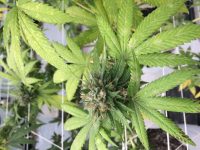
Early Health & Vigor
Most tissue culture methods use sterilized vessels that contain sugar-rich media to support growth of plantlets before they can photosynthesize on their own. “The media is prepped, poured into vessels, and placed in an autoclave (or pressure cooker) where it is subjected to high temps and pressure to achieve proper sterility.”
The sterile environment and rich growth media supplies plantlets with an abundance of everything they need. “When plantlets emerge from culture, they are pathogen-free, with a stockpile of food and nutrient reserves that support rapid growth and vigor, superior to conventional cuttings,” says Dr. Jones.
Stress & Disease
As any grower knows, mother plants can sometimes experience stress and disease. This might come in the form under or over-watering, heat stress, spider mites, whiteflies, mold and viruses. “Any stress or infection that a mother plant is subjected too can impact progeny health and productivity in a couple of ways,” says Dr. Jones.
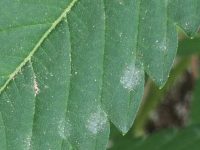
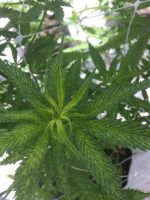
For example, diseases like powdery mildew and tobacco mosaic virus are often systemic, meaning that pathogens have spread to almost every tissue in the plant. Once infected, it is impossible to completely eliminate pathogens from tissues. Therefore any cuttings made from a diseased mother plant, even if they look perfectly healthy, will also be infected and can eventually present disease symptoms like reduced productivity and/or plant death, according to Dr. Jones.
How does tissue culture get around this problem? Remember that explants (small tissue samples used as starting material) can be extracted from any part of the plant. Meristematic cells in shoot tips and leaves are the source of new plant growth. Dr. Jones explains that these cells, and the first set of primordial leaves are not connected directly to the vascular tissue, the plant’s transport system by which pathogens spread. Therefore, meristematic cells tend to be disease-free, whatever the condition of the mother. It takes a sharp blade, a dissecting microscope, and a lot of experience to learn, but as Dr. Jones explains, “harvesting explants from meristems is a routine micropropagation technique used by ‘Big Horticulture.’ One example is the strawberry. Viruses and pathogens are so prevalent that the strawberry industry must use meristematic culture to ensure pathogen free progeny.”
Epigenetics
Now let’s talk about epigenetics. We know that plants don’t have the option of physically moving away from stress or predation. Instead, they have evolved sophisticated ways of changing their own biology to adapt to and/or protect themselves. “Consider what happens to a mom exposed to a pathogen. The infected plant will start expressing (turning on) genes and making proteins that contribute to pathogen resistance,” says Dr. Jones. “These changes to gene expression are partly regulated by epigenetic modifications, chemical changes to DNA that increase or decrease the likelihood a cell will express a particular gene, but that do not actually modify the gene itself. Like annotations to a piece of music, epigenetic modifications don’t change the notes but rather how loud or soft, quickly or slowly the notes are played.”

This is where it gets interesting. “Epigenetic modifications can be systemic and long lived. Plants infected by a pathogen or stressed by drought will present widespread epigenetic modifications to their DNA,” says Dr. Jones. “For an annual plant like cannabis, those modifications are relatively permanent. Thus a cutting from a mom having drought or pathogen adapted epigenetic programming will inherit that modified DNA and behave as if it were experiencing that stress, whether present or not.”
In the wild, this adaptability is critical for plant survival and reproduction, but to a grower, this is a less-than-ideal scenario. “The epigenetic modifications allowed the mother to tolerate the stress, which is great from the perspective of survival and fitness, but it comes at a cost. Some of the finite energy and resources that usually support plant growth and reproduction are instead channeled to stress response,” says Dr. Jones. This trade off results in reduction in overall plant yield and quality. “Those epigenetic changes result in a new phenotype for that mother,” says Dr. Jones. “All cuttings from her will reflect the new phenotype. This is one major mechanism underlying what many in the cannabis industry (incorrectly) call ‘genetic drift,’ or the loss of vigor over successive clonal generations.”
This is again where tissue culture can be such a game changer. The process of dedifferentiation, as explained in part 1 of this series, can rejuvenate a “tired” mother plant by inducing a kind of reboot– clearing accumulated epigenetic modifications that negatively impact progeny vigor and productivity. In the third part of this series, we will discuss the five stages of micropropagation, detailing the process of how you can grow plantlets in tissue culture. Stay tuned for more!

